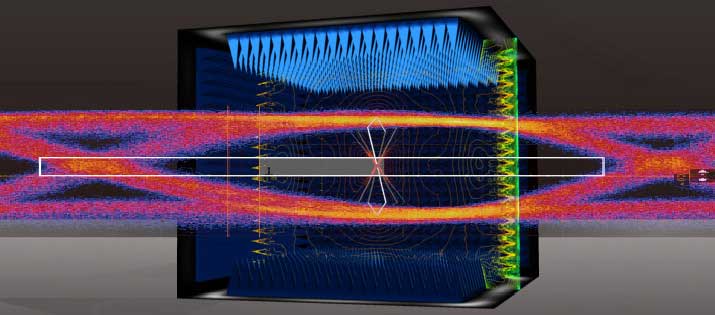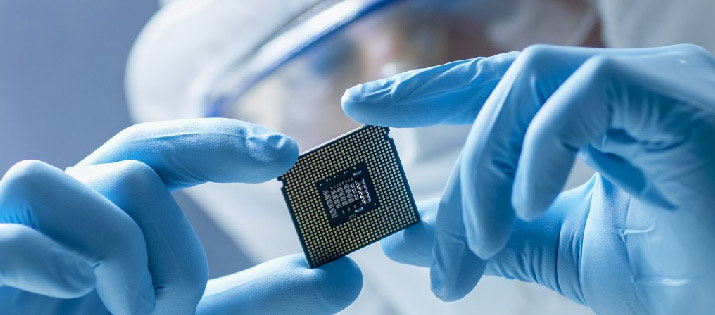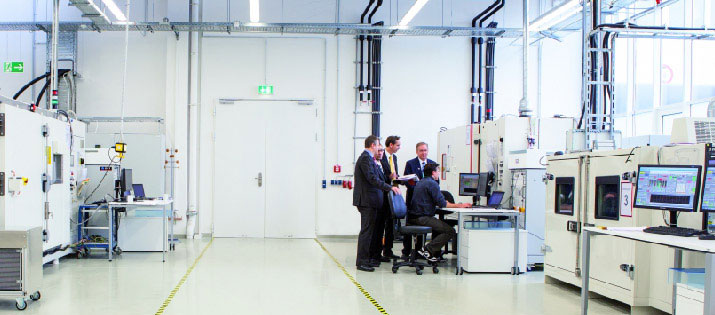The importance of wireless performance for personal computers (PCs) has become increasingly evident in the modern digital world. With the ever-growing demand for internet connectivity, wireless performance has become a critical element in both modern living and working environments. The significance of wireless performance for PCs lies in its direct impact on user experience, productivity, and work efficiency. A PC with excellent wireless performance allows users to fully utilize the various services and applications offered by the modern digital world. On the other hand, when a product is designed with poor wireless performance, it necessitates the assistance and recommendations of a professional consulting team.
Improving Computer Wireless Performance: A Case Study of Internal Noise Suppression
In the previous article, we presented a case study on improving low computer wireless performance. We improved the computer’s throughput through antenna adjustments. However, the receive (RX) values in channels 1 and 11 of the 2.4GHz band were still not ideal. The transmit (TX) values were excellent. This phenomenon is usually caused by internal noise in the product. Therefore, in this article, the Allion expert consultant team will further share their experience on the analysis and mitigation of internal noise in DUT.
After validating antenna adjustments, we observed a certain degree of improvement in throughput. However, the RX (downlink) values on Channel 1 and 11 at 2.4GHz are still not ideal, while the TX (uplink) values are excellent. Typically, this phenomenon is caused by internal noise in the product. Therefore, in this article, the professional consulting team from Allion will further share experiences on analyzing and suppressing internal noise in the Device Under Test (DUT).
Noise is primarily generated from active components and circuits such as power supplies, high-speed computation, and communication (as shown in the diagram below). Noise is transmitted through radiation and physical circuit conduction, thereby affecting antenna transmission and reception or wireless communication modules, resulting in degraded performance of wireless technologies such as Wi-Fi and Bluetooth. Therefore, minimizing noise is preferable.
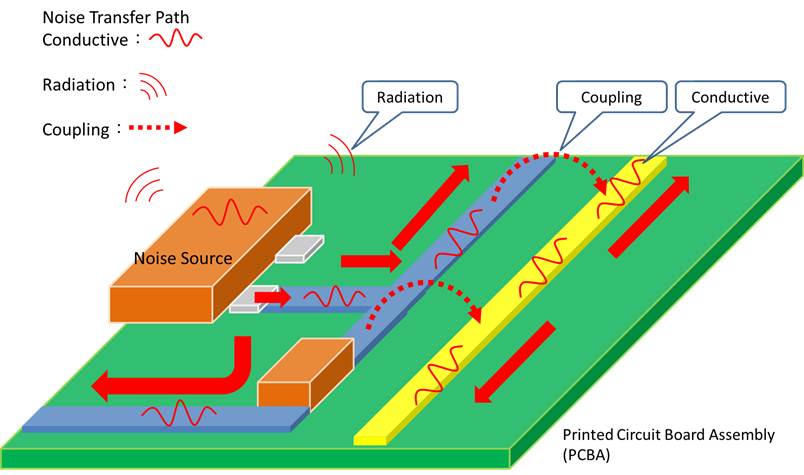
Typically, there are two main approaches to dealing with noise: PCB circuit design and mechanical design.
- PCB circuit design: This involves adding filtering components such as filters and capacitors to the noise circuit, altering circuit routing, and extensively grounding to reduce noise energy and minimize its impact on the system or antennas.
- Mechanical design: This includes sealing structural gaps near noise sources and antennas to prevent noise leakage from affecting antenna transmission and reception.
The Allion consulting team assists clients in identifying noise sources and providing noise handling recommendations with the help of equipment such as Shielding Rooms, spectrum analyzers, and RF Probes, as well as experienced engineers with years of experience.
- Near-field high-frequency probes (left image below): These probes typically have circular and rod-shaped structures. The size of the circular structure affects the size of the measurement area and the energy intensity at different frequencies, making them suitable for large-scale, rapid noise searches. Rod-shaped probes can directly contact small areas, circuit board traces, and component pins, making them suitable for confirming noise sources in small areas.
- Measurement setup (right image below): Inside the Shielding Room, spectrum analyzers and high-frequency probes are used to search for noise sources in electronic products.
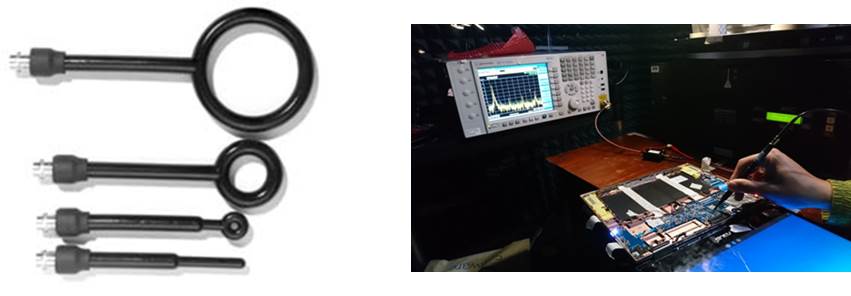
Continuing from the previous case study, due to the small spatial dimensions of the machine and the inability to use shielding to block noise radiation sources, adjusting PCB components and routing may not yield significant results. To avoid wasting excessive development costs, a mechanical modification approach is adopted to address the noise issue. As mentioned in the previous section, the antennas have been modified to one front and one rear, so mechanical strategies need to be separately implemented for each antenna. The diagram below illustrates the relevant strategies:

| Solutions | Descriptions |
| Solution 1 | At points where the card reader contacts the chassis, reinforcing the interface with metallic tape or conductive foam can reduce gaps, thereby minimizing the leakage of internal chassis noise to the outside and reducing the impact on the front-end antenna. |
| Solution 2 | The card reader body is covered with metallic tape to reduce the exposure of the PCBA, thus lowering the impact of noise radiation on the front-end antenna. |
| Solution 3 | The connecting wires of the card reader are wrapped with metallic tape to reduce the radiation noise from the wires affecting the surroundings. |
| Solution 4 | In the contact area between the chassis and the cover, adding conductive foam reduces the leakage of noise through gaps in movable parts, thereby minimizing the impact on both the front and back-end antennas. |
After implementing the adjustments mentioned above, the following diagram illustrates the changes in noise levels in the 2.4GHz band as observed using a spectrum analyzer. Typically, noise mitigation measures are not immediately effective, as each source of noise leakage may affect others. It is necessary to measure and address each one individually. Only then will the noise energy gradually decrease noticeably.
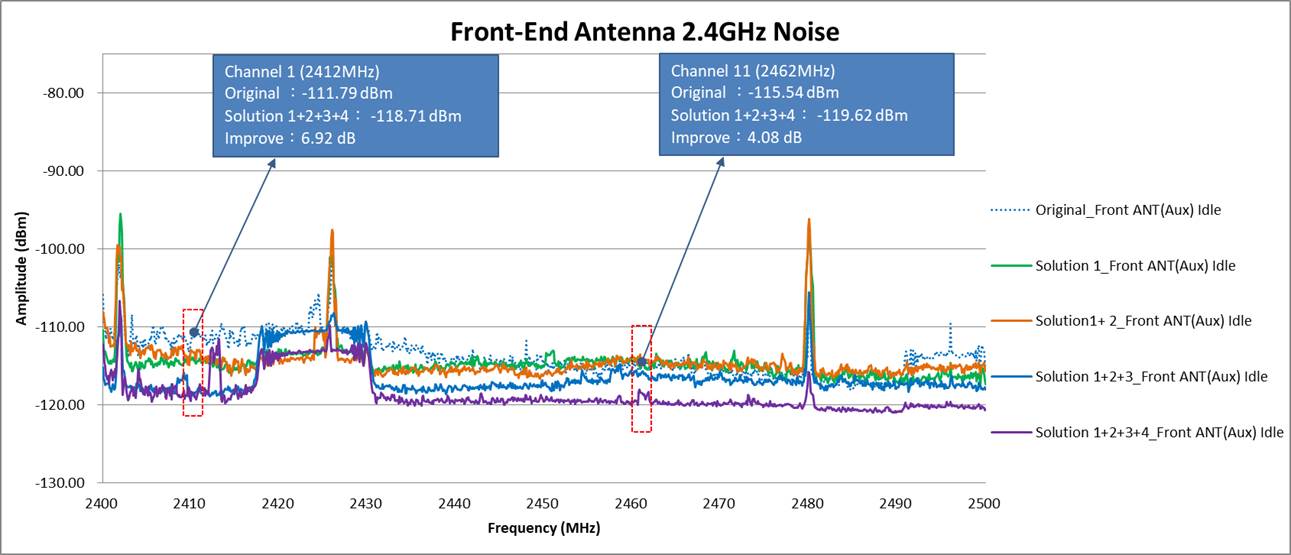
The measurement results of various noise mitigation measures (as shown in the above diagram) indicate that after implementing all the measures, the noise energy at the front-end antenna has decreased by 6.92dB on Channel 1 and by 4.08dB on Channel 11. Additionally, there is a significant improvement across the entire 2.4GHz frequency band.
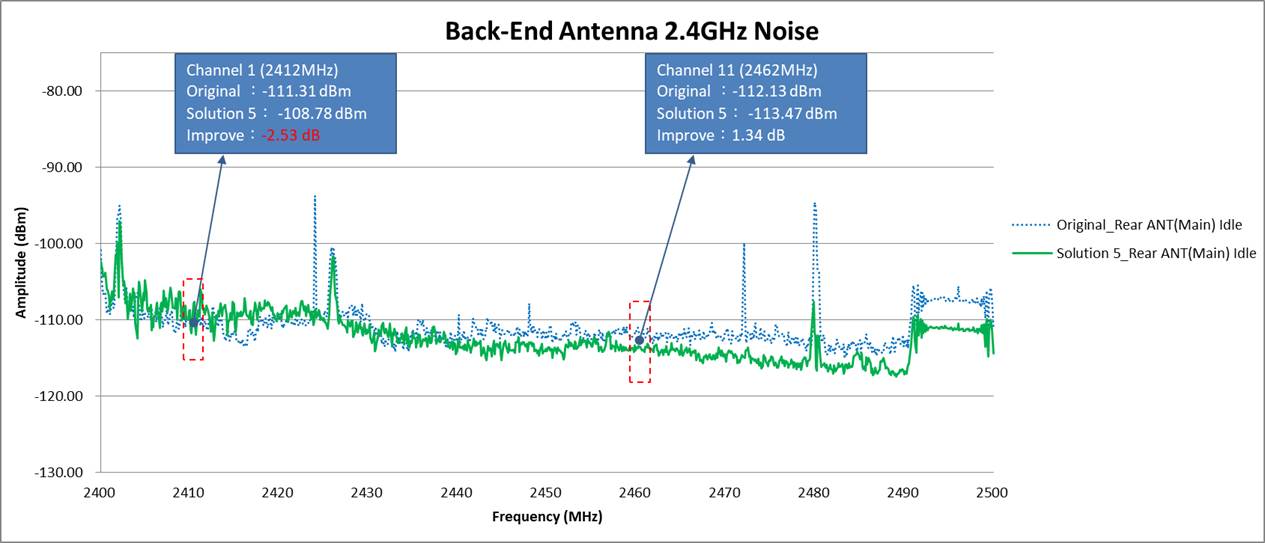
As for the back-end antenna, there was an increase of 2.53dB on Channel 1 and a decrease of 1.34dB on Channel 11. Considering the significant improvement in the middle section of the 2.4GHz spectrum and the reduction in noise peak in the 2.4GHz frequency band, Solution 5 is also considered an effective measure.
Currently, differences can be observed on the spectrum analyzer. Subsequently, throughput testing will be conducted to confirm the extent of improvement in throughput resulting from these solutions. Based on the throughput results, decisions will be made regarding the adoption of all or some of the noise mitigation measures. If there is still a gap between the throughput data and the criteria, additional measures can be implemented. However, these measures need to consider the balance between development costs and progress, as quality and schedule need to be balanced.

According to the table above, after noise debugging, the RX (downlink) Throughput at a simulated attenuation distance of 20m has been optimized to pass, indicating that all solutions implemented by Allion are effective. Similarly, significant improvements in Throughput can be observed at a simulated attenuation distance of 100m, helping to address issues related to poor end-user experiences.
Faster, Easier, Better!Wireless System Performance Consulting Services
The Allion consulting team possesses extensive experience in wireless performance validation, enabling us to identify issues and propose solutions for our clients. We offer troubleshooting solutions at different levels to improve network throughput. Additionally, we can tailor solutions for specific wireless products or protocols based on our clients’ actual usage scenarios to meet their needs. Our services aim to enhance product quality, reduce real-world application risks, and provide faster, more efficient, and comprehensive consulting services and solutions. Our strengths include:
Faster
Allion has professional expertise in both RF and wireless testing fields. We have also collaborated with numerous well-known brands and manufacturers on wireless performance and RF interference testing projects for an extended period. We can assist in identifying potential issues that may arise when products are launched, thereby accelerating the product development and debugging cycle.
- Quickly assist in identifying and resolving issues related to low wireless performance.
- Rapidly establish a wireless interference inspection environment.
- Quickly obtain noise mitigation strategies and improvement results.
Easier
Allion utilizes a stable testing environment to ensure that each test is conducted under “stable and reproducible” conditions, aiding clients in quickly analyzing product performance.
- More efficient testing methods
- Time-saving testing solutions
- More accurate test results
- Support for testing various types of products
Better
Allion not only boasts over 30 years of professional experience, a skilled technical team, and comprehensive testing environments and equipment but also, with extensive user scenario testing experience, we are committed to providing customers with superior service quality.
- Noise measurement for a wider variety of product types
- More comprehensive validation testing plans
- Professional issue isolation and debugging support
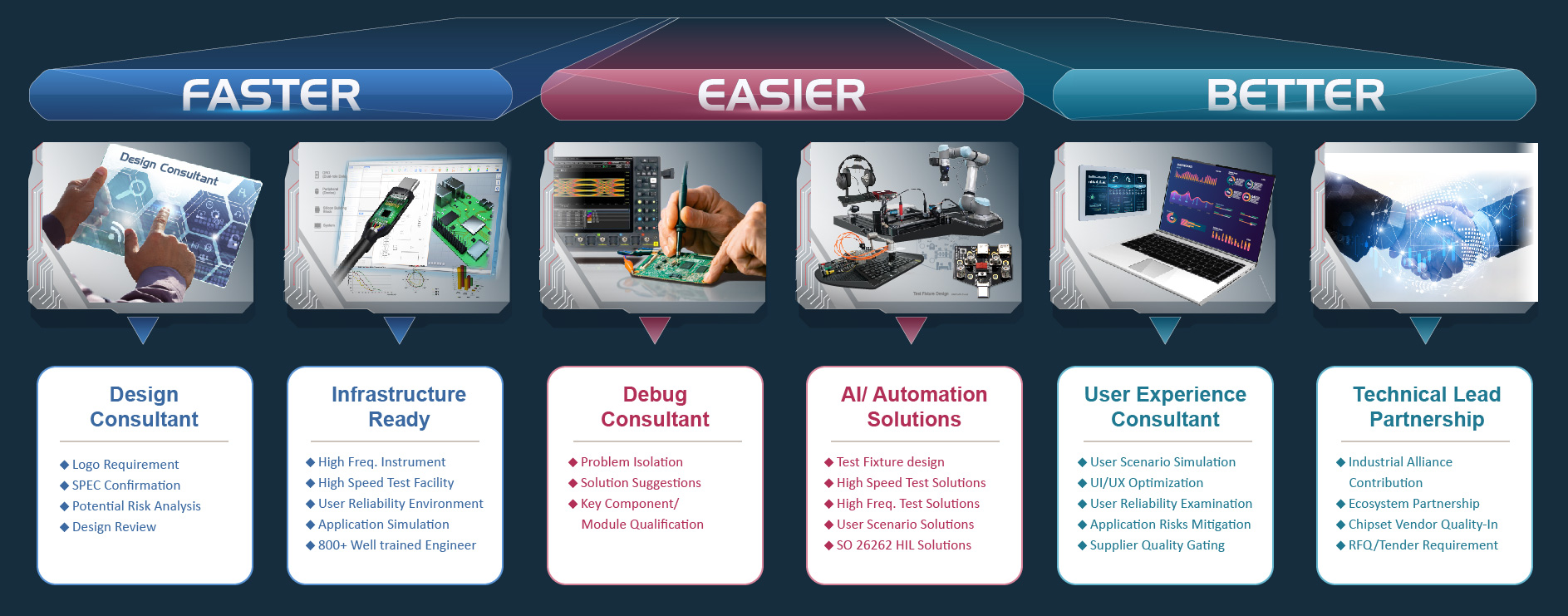
If you have any testing, verification, or consulting service needs, please feel free to contact us through the online form.












